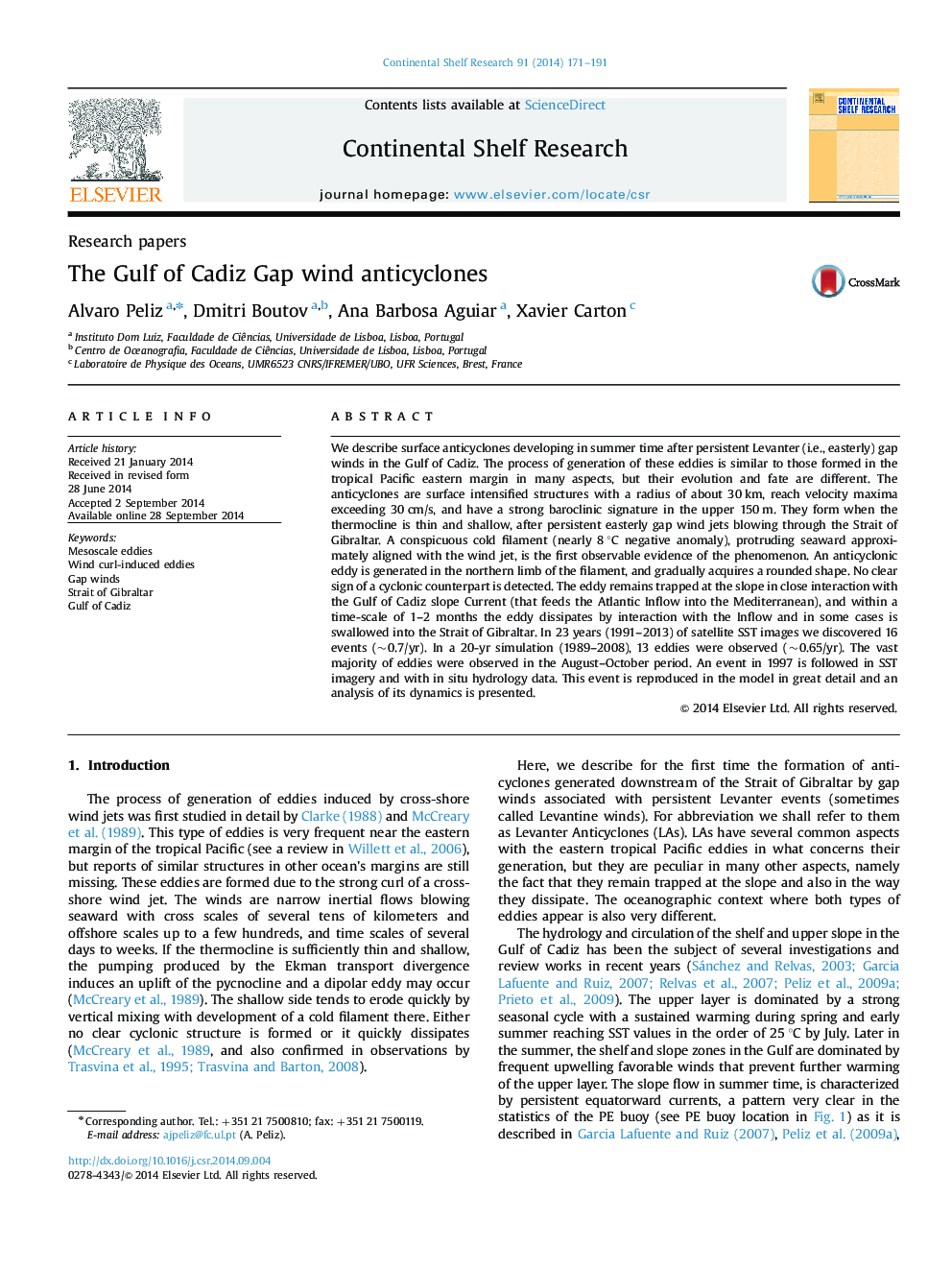| کد مقاله | کد نشریه | سال انتشار | مقاله انگلیسی | نسخه تمام متن |
|---|---|---|---|---|
| 4531729 | 1626121 | 2014 | 21 صفحه PDF | دانلود رایگان |
• We study gap wind induced eddies in the Gulf of Cadiz (off the Strait of Gibraltar).
• Eddies occur during the stratified period after Levanter events.
• The first response is a cold filament followed by the generation of an anticyclone.
• Anticyclones form at a rate of ~ 0.7/year and last 1–2 months.
• Eddies remain trapped at the shelf break and some are swallowed into the Strait.
We describe surface anticyclones developing in summer time after persistent Levanter (i.e., easterly) gap winds in the Gulf of Cadiz. The process of generation of these eddies is similar to those formed in the tropical Pacific eastern margin in many aspects, but their evolution and fate are different. The anticyclones are surface intensified structures with a radius of about 30 km, reach velocity maxima exceeding 30 cm/s, and have a strong baroclinic signature in the upper 150 m. They form when the thermocline is thin and shallow, after persistent easterly gap wind jets blowing through the Strait of Gibraltar. A conspicuous cold filament (nearly 8 °C negative anomaly), protruding seaward approximately aligned with the wind jet, is the first observable evidence of the phenomenon. An anticyclonic eddy is generated in the northern limb of the filament, and gradually acquires a rounded shape. No clear sign of a cyclonic counterpart is detected. The eddy remains trapped at the slope in close interaction with the Gulf of Cadiz slope Current (that feeds the Atlantic Inflow into the Mediterranean), and within a time-scale of 1–2 months the eddy dissipates by interaction with the Inflow and in some cases is swallowed into the Strait of Gibraltar. In 23 years (1991–2013) of satellite SST images we discovered 16 events (~0.7/yr). In a 20-yr simulation (1989–2008), 13 eddies were observed (~0.65/yr). The vast majority of eddies were observed in the August–October period. An event in 1997 is followed in SST imagery and with in situ hydrology data. This event is reproduced in the model in great detail and an analysis of its dynamics is presented.
Journal: Continental Shelf Research - Volume 91, 1 December 2014, Pages 171–191
